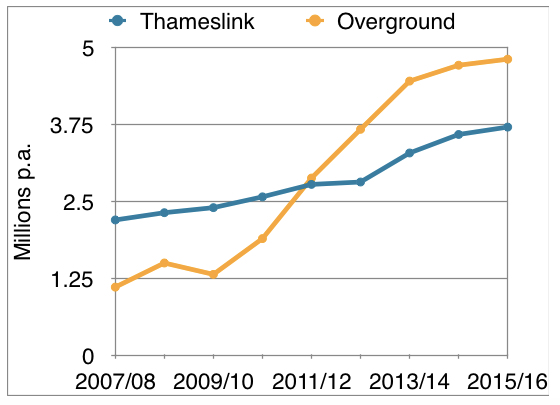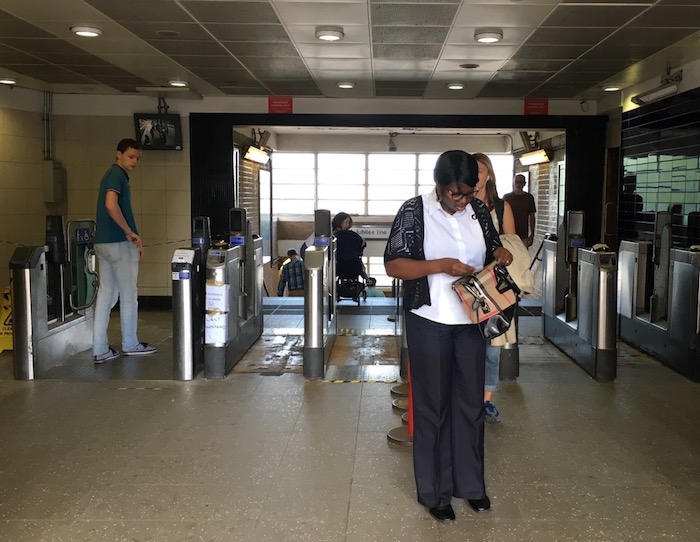West Hampstead passengers top 20 million a year
As long-suffering commuters in (and through) West Hampstead are aware, it’s feels ever more crowded at our stations – especially the tube station. But do the numbers back up that perception? We crunched the numbers, and we were surprised at the results.
The line up to "tap" on at WH underground. A temporary 1 tap in point is a joke @WHampstead @TfL @jubileeline pic.twitter.com/inQQfL55Dh
— Jess (@hodgesctheworld) June 12, 2017
Passenger flows at West Hampstead’s three stations – the Underground, the Overground and Thameslink – are measured separately, but Oyster card data allows reasonably accurate tracking of people changing trains as well as those who enter and exit here and don’t change.
To better understand how tube passenger numbers have grown, we compared West Hampstead to neighbouring Kilburn, Finchley Road, and Swiss Cottage stations. Passenger numbers at these stations have been essentially flat over the past 10 years, but at West Hampstead they are up 50% from 7.5 million to 11 million entries/exits p.a. (a whopping 3.5 million extra passengers a year).

West Hampstead passenger numbers surge from 2010 onwards
The growth spurt began in 2010, but what has driven it? Part of the rise is due to development here, which looks set to increase with more recent development in and around the stations. Just 100 additional residents commuting to work 48 weeks a year is 48,000 additional journeys. However, the real driver has been, the upgrade of and the extra passengers on, the Thameslink and especially the Overground.
Thameslink use has risen steadily from 2.2 million to 3.7 million over the past ten years, but it is the Overground that has seen the real growth. In 2006, there were 1.9 million entry/exits in 2006, dipping to just over 1 million with disruption of construction. This year, that is expected to surpass 5 million.

Longer trains and a more integrated network have pushed Overground numbers up
Add them all together and total passenger entry/exits for the three stations have risen from 10.7 million in 2007 to 19.6 million in 2016 (and should be more than 20 million by 2017). That’s a doubling in ten years. That includes an increasing number of interchanges – the data here is not perfect, but we estimate there were about 250,000 in 2007, last year it was more than 1.5 million. West Hampstead it doesn’t just feel more crowded – it really is!

Woo-hoo, an extra gate at the tube station. A real improvement. What next?
To cope with this growth, TFL is upgrading the Overground to expand the platforms and add step-free access. At the tube station it has added and an extra gate – which will help when it’s finally working. But this is unlikely to be the silver bullet that solves the overcrowding, although it’s a sensible step in the right direction
Another major issue we face is the lack of step-free access at the tube station. Thameslink has it, and the new Overground station will have it. The tube station is the last piece of that particular puzzle. Last week TFL announced six stations were getting funding for step free access from a £200 million pot, but depressingly, this didn’t include West Hampstead. One of those stations is Mill Hill East station, the least-used station on the Northern Line (with 1.3 Million entry/exits p.a.). Doesn’t quite compute.





Leave a Reply
Want to join the discussion?Feel free to contribute!